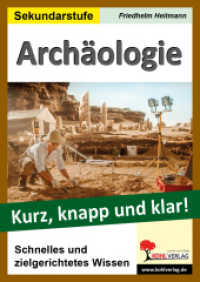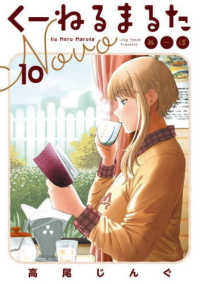- ホーム
- > 洋書
- > 英文書
- > History / World
Full Description
In the early decades of native rule rural Ireland - and in particular the new farmer-owners who had emerged as the major winners in the recent agrarian revolution - exerted a considerable influence over the new Free State and over Irish Catholicism. Patriarchal power on the land had been strengthened by the transfer of land ownership from landlord to tenantfarmer and was given further strength by patriarchal Catholicism and patriarchal nationalism. After 1932 the strides protected import-substituting industrialisation was making never went nearly far enough to threaten agriculture's economic primacy or the countryside's central position in Irish society. Inspired by the traumatic experience of severe crisis conditions in the 1950s, a transformation that set southern Ireland on the path of urban industrialism commenced in earnest in the 1960s.
What emerges is that the power of the state to promote rural change has at once contracted and expanded in the years since Ireland joined the EEC in 1973. Views are divided as to how urban industrialism has impacted on different rural interests. Throughout much of the period since the 1950s the power of organised farmers to represent Irish farming interests remained high as those working the land continued to dwindle in number. In recent decades the always limited power of clerical activists and intellectuals to restructure rural civil society along Catholic (or even Christian) lines has undergone further decline. Most recently the prospects for farm women increasing their relative power have arguably improved the most in certain respects, even if land ownership still remains stubbornly and overwhelmingly in male hands.
Inside Rural Ireland delves deeply into the evolution of Ireland's rural history to explore rural Ireland before and after these momentous transitions by examining the power of ruling politicians and state bodies, farmers, clerical and non-clerical civic activists, intellectuals (social commentators as well as fiction writers), returned emigrants, and farm women to promote or impede a wide range of rural changes.
Contents
Biographies viii
Acknowledgements xi
Abbreviations xii
List of Illustrations xiii
INTRODUCTION
1 Inside and Outside Rural Ireland: The Politics of Change since 1922 3
STATE INTERVENTIONS AND RURAL PLANNING
2 Shifting the Goalposts: Changing Narratives of Western Regeneration in the 1920s 23
3 The Rural Dimension of State Planning: Ireland in the 1960s 35
CLERICAL POWER AND RURAL CIVIL SOCIETY
4 Community Development Visionary or Social Conservative?
Canon John Hayes Reassessed 47
5 Cultivating Vocational Solidarity: The Class and Gender Politics of Organising Irish
Agriculture 57
6 Power and the Politics of Persuasion: Comparing Muintir na Tire's and Tuairim's
Relationships with Church and State in Post-War Ireland 75
INTELLECTUALS, RURAL IDYLLS AND GRITTY REALITIES
7 Contemporary Rural Life in Irish Fiction of the 1940s 97
8 Catholic Intellectuals and Rural Decline 106
FARM WOMEN, THE STATE, AND NEGOTIATING POWERLESSNESS
9 Women and Patriarchal Power in Rural Ireland 119
10 Challenging Patriarchal Power? Women Advisors as Change Agents in
Twentieth-Century Irish Agriculture 130
THE CONTEMPORARY COUNTRYSIDE
11 Emigration and Return: Limitations and Attractions of the Irish Countryside 143
12 The Survival of Rural Ireland 153
Notes 164
Bibliography 196
Index 213






